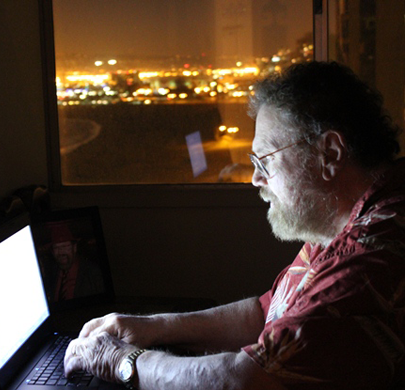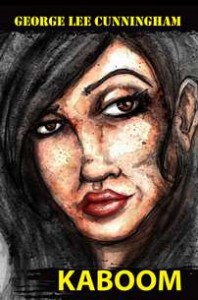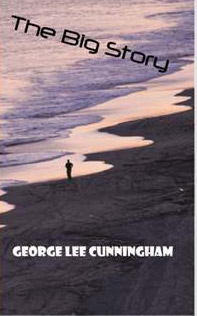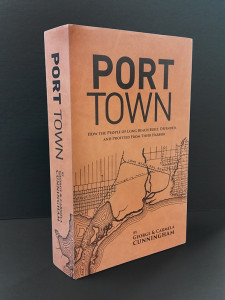ARCHIVED POSTS
-
February 1, 2019
Remembering Dave Arian
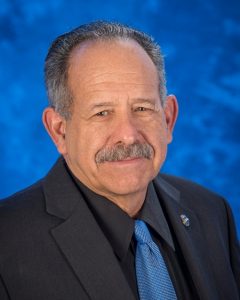
DAVE ARIAN 1946-2019
I’ve been thinking lately about Dave Arian, who died on Jan. 2 after a tough battle with cancer. I was not a close friend of Arian, who was a long-time labor leader and dockworker at the ports of Los Angeles and Long Beach.
I knew him mainly from when I was a port reporter for the Long Beach Press Telegram in the 1990s and later when my wife Carmela and I published The Cunningham Report, a newsletter on West Coast ports.
But I always liked and admired him, even when I disagreed with him, which was often. Arian was not a bullshitter. He always said exactly what was on his mind. If you agreed with what he had to say, that was fine. If you didn’t, that was your choice.
Arian was a short little guy, but he didn’t seem that way when you met him. He not only wore his convictions openly, he was ready to back them up.
I remember one public hearing in which some San Pedro newcomers were complaining about the port, the pollution, and that all the container cranes were ruining their views. Dave got up and said the ILWU was also concerned with pollution because it affected members of the union more than almost anybody. But he also pointed out that the port represented jobs, and reminded everybody that it was a working port and people needed to keep that in mind.
After he finished his statement and was leaving the room, one of the gentrification newcomers to the community made a snide remark, under his breath, but just loud enough for Dave to get the gist of it. Dave came back like a shot and told the guy that if he had something to say about him to say it to his face of shut the fuck up.
The guy shut the fuck up.
I liked Dave Arian before that, but my respect for him leaped after I saw him in action. In an era where authentic males are in short supply, the loss of Dave Arian is a loss for us all.
The general public sometimes has the wrong idea about the unions that load and unload ships. The East and Gulf coasts dockworkers are represented by the International Longshoremen’s Association, the ILA. The West Coast, Alaska, and Hawaiian dockers belong to the ILWU, the International Longshore and Warehouse Union.
Folks who have seen the Marlon Brando movie On the Waterfront, sometimes believe that dockworkers’ unions are controlled by organized crime. There’s some truth to that. Early on when I was first writing about ports, I was shopping at a Lowe’s, when I ran into an ILWU guy I knew who explained the difference.
The East Coast union is run by the mob, he explained with a straight face.
And the ILWU?
“Us,” he said. “We’re just a bunch of Communists.”
It was a tongue-in-cheek comment, but there was a bit of truth there as well.
The government attempted several times in the 30s, 40s, and 50s to deport ILWU founder and International President Harry Bridges, who was born in Australia. The government claimed he was a Communist. Bridges denied the charges. He had some friends, who were Communist, he explained, but he was not a member of the party.
The ILWU is unique in its militant philosophy – a philosophy espoused by Bridges – who would become both a supporter and mentor to Arian. Over the years Arian served as an official in the local union, including serving several times as president. He also served one term as president of the International Union.
In 2010, Arian was appointed as a Los Angeles Harbor Commission by Mayor Antonio Villaraigosa. He served in that position until his death last month.
Arian’s ancestral roots were Russian and Jewish, he said in a short two-minute video. He credited his mother with a sense of social consciousness and his father for his work ethic and union loyalty.
Retired ILWU member Lewis Wright remembers working with Arian when they were both young longshoremen. When I asked Wright for permission to quote his thoughts on Arian, I mentioned that I didn’t always agree with Arian, but I always respected him.
“I also often disagreed with Dave and will sadly miss doing so in the future,” he responded.
Arian had a “San Pedroista” way of pointing out the obvious, Wright recalls.
“As much as he was short of sympathy and etiquette he was all about seeing clearly the lay of the land and where justice stood. He learned that at home.
Years ago “I was visiting Arthur, Dave’s older brother and Dave was complaining to his dad – known as ‘Honest Lu’ on the docks – that someone was sleeping on the couch, which was were Dave slept. So Honest Lu says to Dave ‘the guy on the couch is drunk and needs the couch more than you do’ and that’s where Dave learned about justice.”
“Dave was a scientist in that he collected the facts analyzed them and proposed a theory,” Wright said. “But it wasn’t all theory. He practiced what he preached. Dave was a worrier, he chose his path and he kept to it come hell or high water or jail.”
Wright recalls that Arian’s nickname back in the day was “Mouse.” In the 60s, he and Arian were involved in the civil rights movement. When violence broke out in the Southern states, the two of them joined a group of about 100 people at the Los Angeles federal building to engage in civil disobedience.
“Back then justice was not only learned at home, sometimes the law had its way of making the point and maybe we owe something to the LAPD for the lessons they taught the Mouse,” Wright said. “Dave did five days in L A’s finest jail and when he came out of that jail I swear the Mouse roared like a lion and he has never stopped roaring…. until just the other day. I can’t believe he is gone …”
When Carmela and I shut down the TCR in 2010, we collected a number of kudos from the port community for a job well done. But none touched me more than a personal tribute from Arian – by then a Los Angeles Harbor Commissioner – who said we were always fair to the union and that he appreciated that.
When you get a compliment, where it comes from makes all the difference. A compliment such as that from Dave Arian, was something I valued then and remember now.
Do you have a dissenting opinion or any opinion at all on the subject? Contact me at george@georgeleecunningham.com and let me know. Meanwhile, you can always subscribe and get an email reminder of blog postings. Your name will not be shared and you may cancel at any time.
-
January 29, 2019
2020 VISION
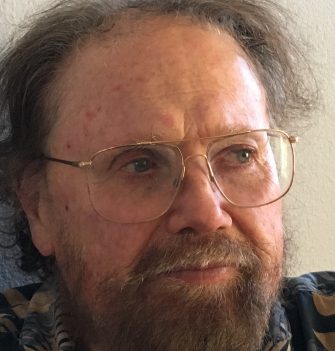 2020 VISION is a book of 12-poems – one for each month of the year – by George Lee Cunningham. The poems are about the joy of life, the state of the world, getting older, and coming to terms with your own humanity. You can get a PDF copy of the poems by clicking HERE.
2020 VISION is a book of 12-poems – one for each month of the year – by George Lee Cunningham. The poems are about the joy of life, the state of the world, getting older, and coming to terms with your own humanity. You can get a PDF copy of the poems by clicking HERE.
-
January 18, 2019
FOR NERDS ONLY
Deborah M. Gordon has spent years studying the behavior or our pesky little friends. We may think of ant as nasty little individuals, but the entire colony is its own kind of life form, from worker ants who live only a year or so to the queen, deep within the hill, who can live to 20 or 30 years. How different are humans? She has thoughts on that too. SHORT STORY on ant colonies, Gorden TED TALK on ants and LONG STORY comparing ant and human behavior.
-
WEIRD HISTORY
Here are 117 supposed historical facts taken out of context that may amuse you, horrify you, or disgust you. I do not vouch for their accuracy. READ MORE
-
January 16, 2019
TOMBSTONE TERRITORY
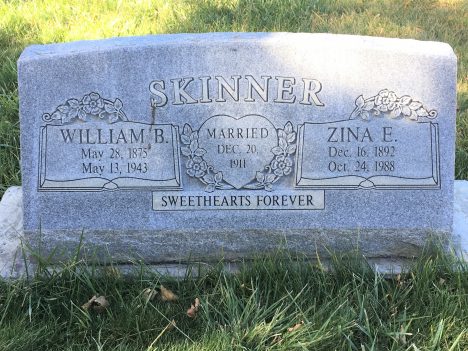
TRUE LOVE: William and Zina Skinner were married in 1911. He was 36 years old. She was 19. He died 31 years later, just shy of his 68th birthday. She died 43 years after that at age 95. But they remain “SWEETHEARTS FOREVER,” both in life and in death. Ely Cemetery, 2018.
Do the dead hold grudges?
I hope not. I hope that after folks have passed on, all the grievances and the differences that separated them in life are buried along with the physical bodies they no longer need.
But it’s hard to say, especially in a small town like Ely, Nevada, where friends and enemies in life end up just a few feet from one another, buried beneath the gravely surface, in coffins separated only by dirt and the roots of tall trees. Some of the dead have fancy stones above their graves, others have more simple plaques, but financial or social status doesn’t mean that much when you’re dead.
The Ely City Cemetery is small – unlike the Forest Lawn or Rose Hills or Arlington mega-cemeteries of Southern California. The graves come down almost to the sidewalk along busy E. Aultman Street, separated only by a 30-inch rock wall. Across the street is the Big 8 Tire Store and the Cruise-In Car Wash and Mini Lube.
Most of the graves at the Ely cemetery are actual upright stones – not the little flat plaques in the ground that make it easier to mow the grass and keep down maintenance costs, as is common in newer big-city plots. The upright stones makes it quicker to locate the graves of loved ones and gives each grave a little personal style of the person or persons buried beneath.

LIFE GOES ON – People getting new tires put on and old ones repaired across the street at Big 8 Tires.
Except for the sound of nearby traffic, the Ely cemetery is blissfully calm on a weekday morning. Aultman is a busy street in Ely with a fair amount of traffic. People driving home from work or going out to eat drive right past the final resting place of family and friends. You wonder how many driving past at 40 mph give a sad nod to loved ones who are departed. And how many folks getting a new set of tires at the Big 8 ever wander across the road for a quick visit with the memories of those long gone. You see fresh flowers on some of the graves, sometimes of people who have been dead for 10, 20 years and more – colorful remembrances of lost relationships.
Ely was a mining town, populated with people from all over the world – Asians, Italians, Slavs, French Basques, English, Greeks, and Native Americans. It was a small town reflection of American society at large, a melting pot of cultures, cuisines, and religions. It is a mix well-represented at the cemetery.

FALLEN WARRIOR – Gone but not forgotten.
In a shady grove, set off to one side, is the section for Ely veterans, who served their country. You find the graves of veterans lined up in rank and file from World War I, World War II, Korea, Vietnam, and the newer ones from the current era. Ely’s recognition of those who served.
Some of them have their wives buried next to them, joined in death as they were in life. There is even a father and a daughter – him a private from World War II, she a sergeant first class from the Vietnam War.

ALL IN THE FAMILY – Veterans united by blood.
The Ely graveyard, like all graveyards, contains both mysteries and secrets. Who were the people interred beneath the sod. How did they die, and are their graves near their friends or beside their bitter enemies? And perhaps most of all, do the bones and withered flesh encased beneath the sod have any relation at all to the person who once was, or is it merely a remembrance for the ones left behind?
You may think such thoughts, but not for too long. The living need to live. The dead are just one more reminder that we are all headed for the same place. Life is short, joy is fleeting, and time is not to be wasted.
Do you have a dissenting opinion or any opinion at all on the subject? Contact me at george@georgeleecunningham.com and let me know. Meanwhile, you can always subscribe and get an email reminder of blog postings. Your name will not be shared and you may cancel at any time.

